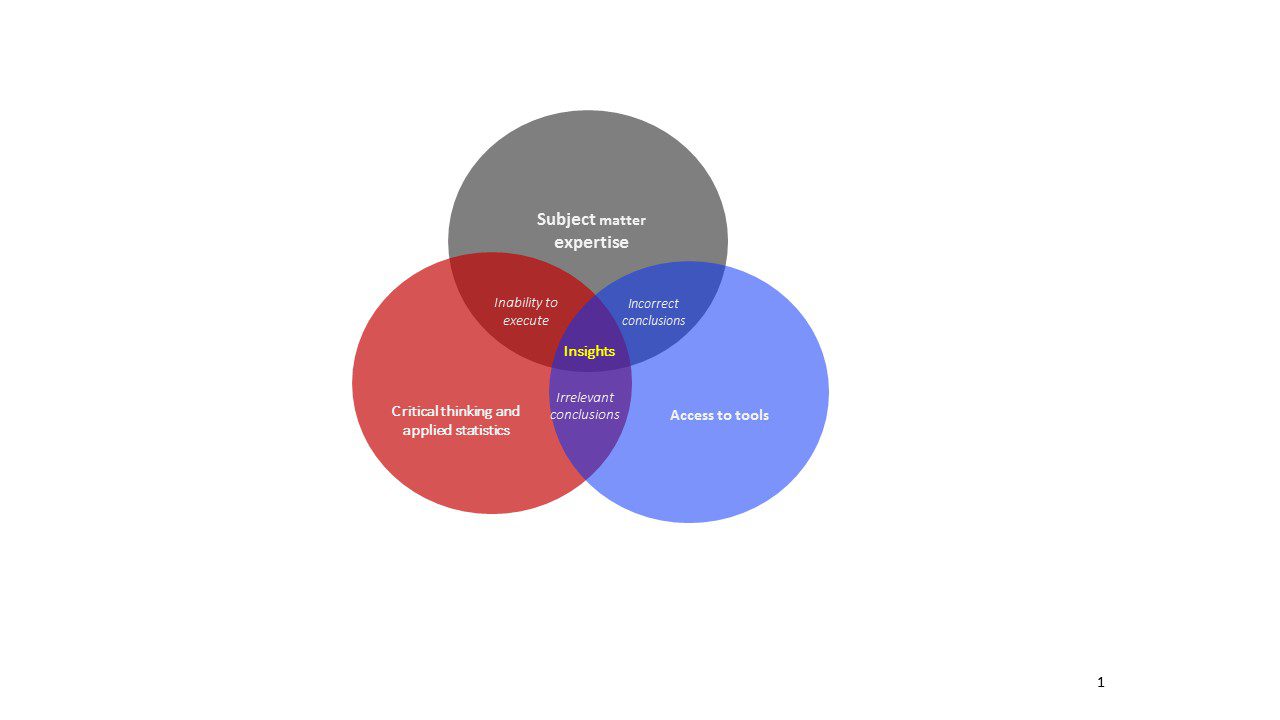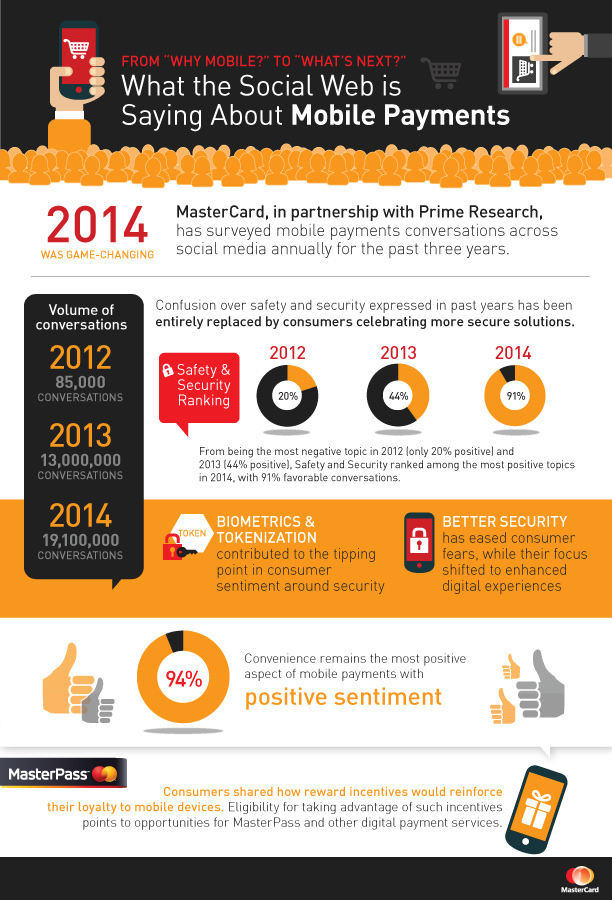The post was originally featured in the Spring 2015 issue of The Public Relations Strategist.

Rather than “big data” and “real time,” one might think instead of “right data” and “right time” within a structure which enables exploration, fosters discovery and surfaces actionable insights for better decision-making. Based on the challenges faced and the answers sought, the common vendor focus on real-time open-spigot portals may be a hindrance in organizations whose decision-making process is deliberate or for those organizations in situations that require thoughtful consideration.
Uncovering Actionable Insights
In an environment where data is plentiful, insights which drive meaningful decisions and create business value are precious. Technology and data aren’t enough. Philip B. Stark, professor and chair of statistics at the University of California, Berkeley, asserts that insights come only as the result of an essential triad (Fig.1) which combines critical thinking and statistics skills; subject matter expertise; and access to the appropriate tools. Those who omit any one element place themselves in jeopardy. The proper balance is difficult to achieve but the company who uncovers and acts on the best insights usually wins.

PR insights manifest themselves in two ways:
- To inform better public relations decision-making which improves communications results
- To inform better organizational decision-making which improves business results
Case Study: MasterCard
One of the few steadfast companies who committed fully to research, applied their findings and became more strategic, more efficient, and more successful is MasterCard.
In 2011, MasterCard’s executive leadership challenged the organization to transform the B2B financial services giant into a more consumer-focused technology company.
To do so, MasterCard created the Conversation Suite – a dynamic, global insights and engagement engine – built and supported by a global team of consultants and social experts who monitor, engage in and analyze conversations around the world in real-time, 24/7. The social listening and analysis of public profile social data serve as a foundation for communication decision making and as a barometer and resource to the business. One demonstration of MasterCard’s ability to transform data into insights, actions and business results relates to its efforts in mobile payments, an emerging form of commerce enabled through the use of mobile devices.
Applying Insights: MasterCard
Despite the popular misconception, MasterCard does not issue credit cards (banks do). Instead, the company earns fees by making transactions and everyday commerce activities easier, more secure and more efficient. Purchase volume is a business metric and the speed and ease of mobile payments represent a compelling opportunity to drive transactions.
During a routine weekly social media analysis report in 2012, PRIME’s data focused communications team uncovered a trend revealing consumers’ great excitement and anticipation for the emerging payments technology. But those who tried the technology expressed two sources of anxiety: acceptance and security. An even deeper statistical analysis revealed that concerns over “security” centered on unfamiliarity with the technology and the possibility of data compromises. Unease over “acceptance” arose over the inability of certain merchants – principally taxi drivers and fast food restaurants – to process mobile payments at the point of sale.
Beyond the PR team who listened, engaged and refined their communication, the team shared their social “voice of the customer” insights with others throughout the company whose planning and execution were influenced in a variety of ways:
- Go to market messaging and external communications were adapted to speak directly to the insights realized via social listening.
- A global PR campaign was designed to promote and proactively amplify the voice of the customer and position MasterCard as the technology partner that consumers and merchants could trust in the emergence of mobile payments.
- Customer care and response teams were set up to monitor online/social chatter related to the subject matter and the company proactively engaged with people when questions were raised and used the platform to build trust and brand loyalty.
Following the initial discovery, the company’s market research reported on a variety of customer satisfaction issues, one of which was mobile payments. The survey results confirmed the social media findings serving as an early indicator on the pulse of the customer that was later confirmed by longer term traditional research methodologies.
In the second year, the second study revealed that mobile payments transitioned from skepticism to adoption with 81% of conversations driven by mobile payments users as opposed to the prior year when only one-third of consumers discussing mobile payments had actually used a product. The global customer satisfaction survey again confirmed the integrity of the social media insights. Most importantly, the volume of mobile payments accelerated.
In 2014, the third social media analysis revealed that conversations had gone from “problem solved” to “what’s next?”
The study revealed significant year-over-year improvements on a number of key performance indicators:
- Social volume supporting mobile payments indicated growing mobile payments acceptance. In 2012, 85,000 identifiable mobile payment social conversations increased to 13,000,000 in 2013 and to 19,100,000 in 2014
- Human-validated social sentiment achieved its most positive ratings in 2014 with 94% favorable conversations globally, up 17pp from 2013 and up 24pp. from 2012
- By 2014, positive conversations centered on convenience rather anxiety, as consumers shared their excitement around integrating innovative payment solutions into their daily lives, as well as reward incentives and cardholder benefits through the use of mobile payments
Over the course of three years, MasterCard’s underlying social data fueled insights to shift consumer conversations from questioning available mobile options and the security of mobile to the possibilities of enhanced experiences through tech innovations on digital devices.
According to Andrew Bowins, MasterCard’s Senior Vice President, Corporate Reputation & Engagement, “Insights unlock an organization and shape culture, thinking and actions. In the age of real time communications and engagement, companies need to listen twice as hard before they speak. This is what MasterCard is doing today and in turn our ability to listen, learn and then engage has served as a catalyst for change and evolution in communications and across the way we operate as a company.”
Transforming Data to Insights
- Monitor and Integrate. Good data is essential. Data may come from a variety of sources including, social and traditional media, blogs, and survey results along with business measures like employee loyalty, customer retention, and sales volume or, as in MasterCard’s case, transactions). These “small data” streams lead to “big data” insights when combined by expert data scientists
- Explore and Investigate. The speed, volume and variety of conversations, topics and issues at a given time means that everyone must pay attention to the thousands of mature and emerging issues bubbling around us
- Analyze and Illuminate. Relying on talents, skills and tools, data scientists collaborate with PR leadership to uncover gaps, unusual activity and other signs of interest for further inquiry. Reduce the many opportunities uncovered to focus on just those with the greatest importance to the organization and with the greatest opportunity for positive differentiation
- Share and Initiate. Insights without action are the slowest path to victory. Actions without insights are the noise before defeat. Since meaningful insights are rare, share them with peers to optimize your “ROI (return on insight)” and act upon what you learn.
In conclusion, data drives value only when they derive insights that drive action. In this way, the strategic and tactical aspects of public relations are mutually reliant and equally important. And when shared and integrated, public relations contributes positively to meaningful business results.
1 Philip Stark, Twitter comment, November 24, 2014, https://twitter.com/philipbstark/status/536955754163363840.
Mark Weiner is CEO of PRIME Research and a member of the IPR Measurement Commission.




